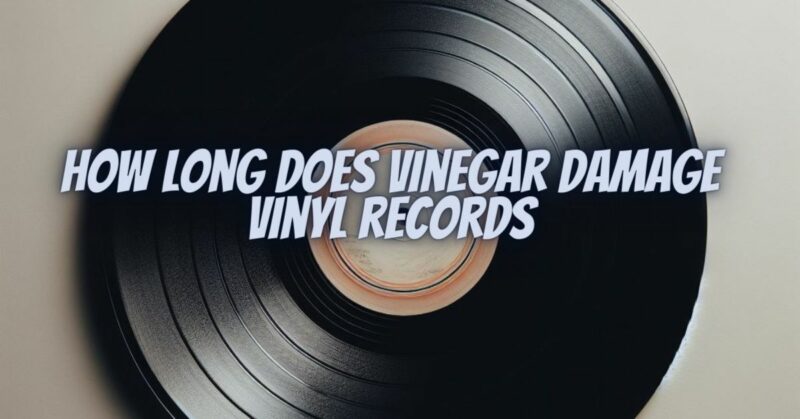Vinegar is a versatile household item known for its various uses, from culinary applications to cleaning and disinfecting. While it can be effective for many cleaning tasks, using vinegar on vinyl records is a controversial topic among vinyl enthusiasts. In this informative article, we’ll explore the potential effects of vinegar on vinyl records, how it can cause damage, and how long it takes for these effects to become noticeable.
The Vinyl Record: A Delicate Medium
Vinyl records are fragile audio artifacts that require careful handling and maintenance to preserve their sound quality and longevity. Vinyl is made from a compound known as polyvinyl chloride (PVC), which can react to various chemicals and environmental factors.
Why Vinegar Can Be Harmful to Vinyl Records:
Vinegar, although a natural and effective cleaner, can pose risks to vinyl records due to its acidic nature:
- Acidic Content: Vinegar contains acetic acid, which, when in contact with vinyl, can potentially lead to chemical reactions that affect the record’s grooves.
- Surface Damage: Prolonged exposure to vinegar can erode the top surface of the record, potentially causing scratches, pits, or other imperfections that affect playback.
- Residue: Even when diluted, vinegar can leave behind a residue that may affect the stylus’s performance and add unwanted noise to the playback.
- Label Damage: If vinegar comes into contact with the label area, it can cause ink smudging, fading, or even label deterioration.
How Long Does It Take for Damage to Occur?
The extent and speed of damage from vinegar exposure depend on several factors:
- Concentration: The more concentrated the vinegar solution, the faster it can potentially cause damage. A highly concentrated vinegar solution may harm the record more quickly.
- Contact Time: The longer vinyl records are in contact with vinegar, the more time there is for the acid to affect the surface. Quick cleaning and thorough rinsing can minimize damage.
- Vinyl Quality: The quality of the vinyl itself plays a role. Higher-quality vinyl records may be more resistant to damage than lower-quality ones.
- Record Condition: The existing condition of the record, including any pre-existing damage or wear, can affect how it responds to vinegar exposure.
- Environmental Factors: Environmental conditions such as temperature and humidity can influence how quickly vinegar damage becomes noticeable.
Safe Vinyl Cleaning Alternatives:
To clean vinyl records safely and effectively without risking damage, consider using the following alternatives:
- Distilled Water: Distilled water is a gentle option for cleaning records. It can help remove dust and dirt without introducing acidity or residue.
- Record Cleaning Solutions: Commercially available record cleaning solutions specifically designed for vinyl records are a safe choice. They are formulated to clean records without causing damage.
- Microfiber Brushes and Cloths: Microfiber brushes and cloths are excellent for dry cleaning records, removing surface dust and particles without the need for liquids.
- Carbon Fiber Brushes: These brushes can help maintain the cleanliness of your records and stylus.
- Professional Cleaning Services: For valuable or heavily soiled records, consider professional record cleaning services that use specialized equipment and solutions.
While vinegar is a household staple, it’s not the best choice for cleaning vinyl records due to its acidic nature. The damage it can cause varies depending on factors like concentration, contact time, and vinyl quality. To ensure your vinyl records remain in excellent condition, opt for safer cleaning alternatives designed specifically for vinyl maintenance. By treating your vinyl collection with care and using appropriate cleaning methods, you can enjoy your records for years to come without worrying about vinegar-related damage.


